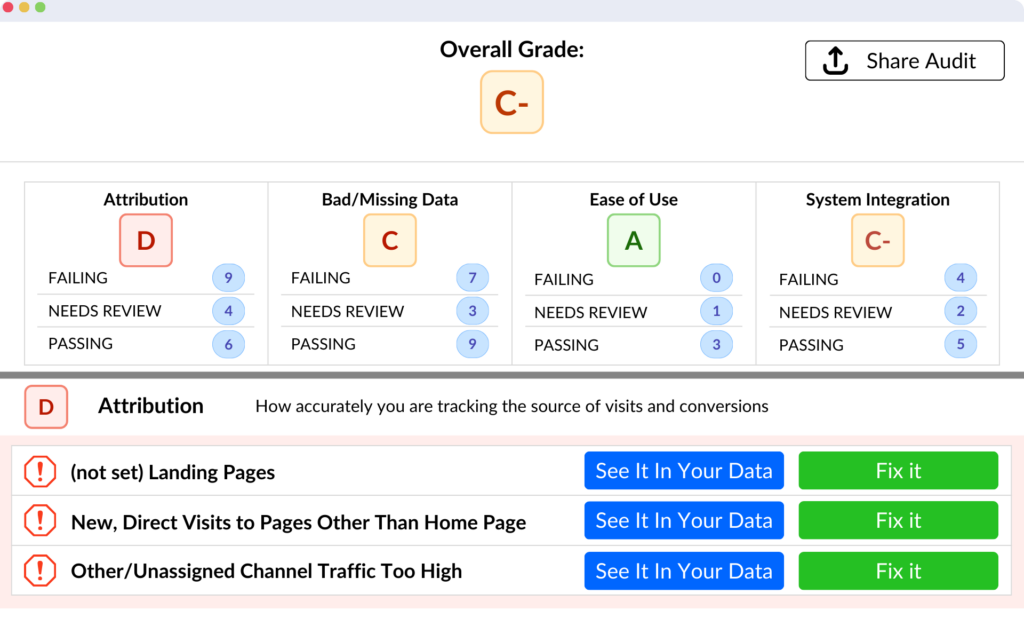Understanding The Ins and Outs of Visuals in GA4
As a digital marketing professional, you are likely familiar with the importance of data in making informed decisions for your business. One of the most popular tools for tracking and analyzing website data is Google Analytics.
Recently, Google has released a new version of the platform, called Google Analytics 4 (GA4). While GA4 offers many new features and improvements over the previous version, Universal Analytics, it also comes with its own set of challenges. One of the most significant challenges is the limitation of visualizations in GA4.
Table of Contents
Misunderstandings with GA4
One of the main misunderstandings with GA4 is the expectation of pre-built reports and dashboards that were available in Universal Analytics. These are not available in GA4, which can be a source of frustration for individuals who expect to see cool reports that can be used as a team. This can be a significant pain point for businesses who have deployed GA4 and are trying to use it as their primary web analytics tool.
Another misunderstanding is related to the explore tool, which is the main way to share insights with your team and publicize data in GA4. The explore tool is a simple interface that allows you to analyze your data with a few clicks, but it’s not as visually appealing or customizable as other reporting tools. It’s meant more as an analysis tool and not as a shareable or presentable report.
Additionally, GA4 doesn’t have a good monitoring set of functionalities, which can make it difficult for businesses to monitor their performance over time. This can be especially frustrating for businesses who have been using Universal Analytics, which had dashboards that could be built to monitor performance over time.
It’s important to note that GA4 is a new platform with new capabilities and limitations. Businesses should understand that if they are expecting the same level of customization and visualization as in Universal Analytics, they will likely be disappointed.
However, if they are willing to explore the new capabilities and learn how to use the new tools, they will likely find that GA4 can provide valuable insights that were not possible before.
Differences between GA4 and Universal Analytics
One of the main differences between GA4 and Universal Analytics is in the way data is collected, stored, and processed. GA4 is built on a new data model, which allows for more advanced analysis and better privacy controls. However, this also means that the pre-built reports and dashboards that were available in Universal Analytics are not available in GA4.
In GA4, the main way to share insights with your team and publicize data is by customizing the pre-built reports a little bit or by building explorations in the explore tool. The explore tool is a simple interface that allows you to analyze your data with a few clicks, but it’s not as visually appealing or customizable as other reporting tools. It’s meant more as an analysis tool.
In contrast, Universal Analytics had dashboards that could be built and used to monitor performance over time. However, Google has actively been discouraging the use of dashboards in favor of their data visualization tool, Data Studio. Data Studio allows you to connect to multiple data sources, including GA4, and create custom reports and dashboards that are tailored to your specific needs. It also provides a more comprehensive view of your data and a more visually appealing presentation.
It’s important to note that GA4 is not a direct replacement for Universal Analytics, it’s a new platform with new capabilities and limitations. Businesses should understand that if they are expecting the same level of customization and visualization as in Universal Analytics, they will likely be disappointed. However, if they are willing to explore the new capabilities and learn how to use the new tools, they will likely find that GA4 can provide valuable insights that were not possible before.
Why Google is Doing This
Google is pushing for the use of Data Studio as the primary tool for building dashboards, sharing data, and monitoring performance. The reason behind this is that Data Studio offers businesses more flexibility in terms of data visualization and reporting. It allows them to connect to multiple data sources, including GA4, and create custom reports and dashboards that are tailored to their specific needs.
Additionally, Data Studio provides the ability to join more than just web analytic data, and also the ability to visualize and brand it to the way that businesses want it to look.
Google’s focus on Data Studio is also driven by their business objectives, which include increasing revenue from advertising and cloud services. By encouraging the use of Data Studio, Google is able to generate more revenue from both advertising and cloud services.
It’s important to note that while GA4 may have limitations when it comes to visualizations and reporting, the use of Data Studio can help businesses to overcome these limitations and gain a more comprehensive view of their data.
It’s also important to keep in mind that while GA4 may require a bit of an adjustment period, it’s a new platform with new capabilities and it can provide valuable insights that were not possible before.
Conclusion
In conclusion, Google Analytics 4 (GA4) offers many new features and improvements over the previous version, Universal Analytics. However, one of the significant challenges with GA4 is the limitation of visualizations.
The pre-built reports and dashboards that were available in Universal Analytics are not available in GA4. The explore tool is a simple interface that allows you to analyze your data with a few clicks, but it’s not as visually appealing or customizable as other reporting tools.
Businesses that have multiple websites or apps and need to track data across all of them may find Data Studio as a useful tool. It allows you to connect to multiple data sources, including GA4, and create custom reports and dashboards that are tailored to your specific needs.
While GA4 may require a bit of an adjustment period, it’s important to remember that it’s a new platform with new capabilities, but also with new limitations.
With the right approach and mindset, businesses can leverage the power of GA4 to gain valuable insights that were not possible before.











